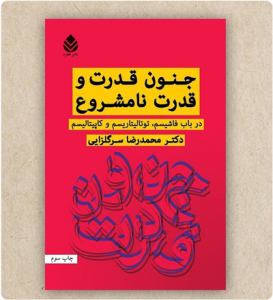Introduction:
Although the term “collective unconscious” was first coined by Dr. Carl Gustav Jung (a Swiss psychiatrist and mythologist), many theorists before and at the same time referred to the term “collective subconscious” in other terms. What Jung added to this was the proposition of “the possibility of liberation from the bondage of the collective psyche”: the individual who goes through the stages of individualization is freed from the invisible chains of the mass psyche.
What differed between Jung and the other experts was their views on the collective unconscious content. Georg Wilhelm Hegel considered the historical stage to be the content of the collective unconscious.
Karl Marx the economic class and Jacques Lacan the language, while Jung’s view of the collective subconscious was a “mythical” view that is clearly identifiable in his analysis of the cause of World War I. (Jung’s book and politics: Volodymyr Walter Odajnyk – Ney Publishing)
In this article, I want to look at an example of the collective unconscious, not from Jungian’s point of view, but from Marx’s point of view: the collective subconscious of the petty bourgeoisie!
Concept of social class:
From Marx’s point of view, two main classes and two sub-classes can be distinguished in the socio-economic structure. The main classes are the bourgeoisie and the proletariat.
The proletarian class consists of people who work and use the fruits of their labor to the extent necessary for the necessities of life. But these people do not determine the “working conditions” since they do not own economic resources (mines, farms, construction land) and economic tools (factories, machines), but those who have economic resources and tools determine the “working conditions” and Naturally, these people determine the working conditions in such a way that they take the greatest share of the “added value” and pay the least share to the proletariat. We call these people bourgeois.
But in addition to the two main classes of the proletariat and the bourgeoisie, there are also two sub-classes. One is the petty bourgeois class and the other is the lampoon class of the proletariat.
The petty bourgeoisie is on the border between the bourgeoisie and the proletariat. They have been promoted from workers to “head workers” (both in terms of income growth and in terms of society) and are in fact mediators between the bourgeoisie (factory owner – landowner) and the proletariat (workers).
The last class is also the lampoon of the proletariat. These people are financially low and close to the proletariat in this respect, but unlike the proletariat they are not engaged in work that creates added value, and often do not engage in group and team work, and thus, unlike the proletariat, lack a “collective identity.” are. Those who have false or illegal occupations (beggars, pickpockets, scoundrels, drug dealers and prostitutes) belong to the lampoon class of the proletariat.
This group (the lampoon of the proletariat), unlike the proletariat, plays, according to Marx, a “counter-revolutionary” role, that is, they prevent the working class from moving towards the formation of a socialist society. Because they sell themselves at a low price due to financial weakness and lack of social identity, the bourgeoisie uses this class to suppress the proletariat.
Psychology of petty bourgeoisie
In this article I want to deal with the psychology of the petty bourgeoisie: the class which originates in the proletarian class and whose perspective is in the bourgeois class, therefore, is always caught in an internal conflict.
It was important to me to address this issue in this article because most psychotherapists refer to the petty bourgeoisie, and although they present their conflicts on a completely individual and familial level, psychotherapists need to be aware that the deep roots are often The conflicts of these people are the level of their collective class unconscious.
The bourgeoisie lacks empathy with the working class. They have no sympathy for the proletariat, but have an “instrumental view” of them. They may even strive for their livelihood and welfare, but not because of their “human understanding of their living conditions” but because they want to increase their motivation and cooperation in the field of production and services, but in this regard the bourgeois theory is: “Be careful not to give them more than they can handle, they have no aspect to them, they get mad.”
But a petty bourgeoisie with a lower class than itself (whether the proletariat or even the lampoon of the proletariat) has sympathy because it has its origin in that class, so it can not bear the suffering of this class. He has been promoted and he can not accept his living conditions. Hence his vision is to reach the bourgeoisie, but he does not have the “cruelty” of the bourgeoisie. Neither with the “satisfaction” of a worker can he close the framework of his life, nor with the “cruelty of the bourgeoisie” can he close his baggage!
When he sees the palaces and expensive cars of the bourgeoisie, he mourns, and when he sees the crooked back of the poor, tears of sorrow gather in his eyes!
The petty bourgeoisie, like the lampoon of the proletariat, lacks a collective identity. His identity is formed by “competition with homogeneities” and not by “solidarity”, so he, like the lampoon class of the proletariat, sells himself cheaply. The discourse of “my agent and my excuse” is common among this class, with the difference that the lampoons often do not feel guilty or remorseful because of their lower level of awareness, but the petty bourgeoisie feels guilty and remorseful when it sells itself!
The result is that the petty bourgeoisie is full of anger. Sometimes he introjects this anger and gives him a feeling of inadequacy, helplessness and depression, and sometimes he projects this anger and projects anger and hatred towards those who are in a position of power. Thus, the movements that originate from the petty bourgeoisie are full of subconscious tendency to destruction and have militant tendencies (for example, in contemporary history, we can mention the terrorist acts of the Fadaiyan-e-Islam and the Mojahedin Khalq).
The petty bourgeoisie also has deep conflicts over religion. Religion for the proletariat is the same opium as Karl Marx said, so the proletariat is addicted to this opium and is less likely to hesitate in consuming its opium. On the other hand, the bourgeoisie is also completely secular and bears the name of any religion. In practice, they think only of their own economic benefit, and that is enough!
But the petty bourgeoisie has an internal conflict with the subject of religion. He can not calm down with this opium, nor can he use it as a tool like the bourgeoisie. Thus the petty bourgeoisie has deep semantic and moral concerns, it does not reach the harbour quietly, nor can it give up sailing and surrender to the waves: it reads books, talks, is curious, and has self-consciousness and self-blame.
The future of a petty bourgeois
Whether the petty bourgeoisie overcomes its emotions and sets foot on its emotional sensibilities and moral concerns in order to achieve the bourgeois’s prospects, and thus elevates itself to the level of the bourgeoisie, or sets foot on its economic interests and finds financial conditions similar to proletariat, To the end of life will be involved in internal conflict.
His constant use of psychedelics or alcohol and drugs may calm him down, or membership in a religious sect may calm him down, but the fire is always in the ashes, but depending on which class he joins, his next generation will accept the collective characteristics of that class and They are free from conflict. But if the petty bourgeoisie survives, the next generation will inherit a similar fate.
Individuality, truth or myth?
As I said in the introduction to the article, Carl Gustav Jung, by raising the issue of individuality, raises the possibility of liberation from collective mental captivity. (In Jung’s view the collective psyche is different from the collective unconscious, but in the Marxist view the psyche is equivalent to the collective unconscious).
Since Jung’s view is “liberal” (individual-centered) nature and is fundamentally incompatible with “socialist” (community-centered) views, we cannot confirm or reject his theory in the Marxist linguistic system. From a socialist point of view, the healthy individual is unachievable in a sick economic system (capitalism), so, not the individual, the whole discussion of mental health is the product of a healthy socio-economic system.
Positive aspect of inner conflict!
Although conflict burns like a burning fire, it also has a positive aspect: self-awareness! Just as you become aware of the presence of your body when you are in physical pain, you become aware of the presence of your (self) wholeness only in situations of internal conflict. The petty bourgeoisie, therefore, is subject to self-consciousness as it is doomed to conflict.
The bourgeoisie, the proletariat and the lampoon of the proletariat are “typically” lacking in self-consciousness and behaving mechanically and mechanically, but the petty bourgeoisie makes the individual concerned and at the same time rebellious, unpredictable and non-mechanical.
When Albert Camus says, “I rebel, so I am,” and Jean-Paul Sartre says, “To be human is to worry,” they describe the petty bourgeois!
Dr. Mohammad Reza Sargolzaei – Psychiatrist
Translated By: Negar Kolkar
لینک کوتاه مطلب: https://drsargolzaei.com/en//?p=14041
این مطلب به زبانهای Persian در دسترس است








